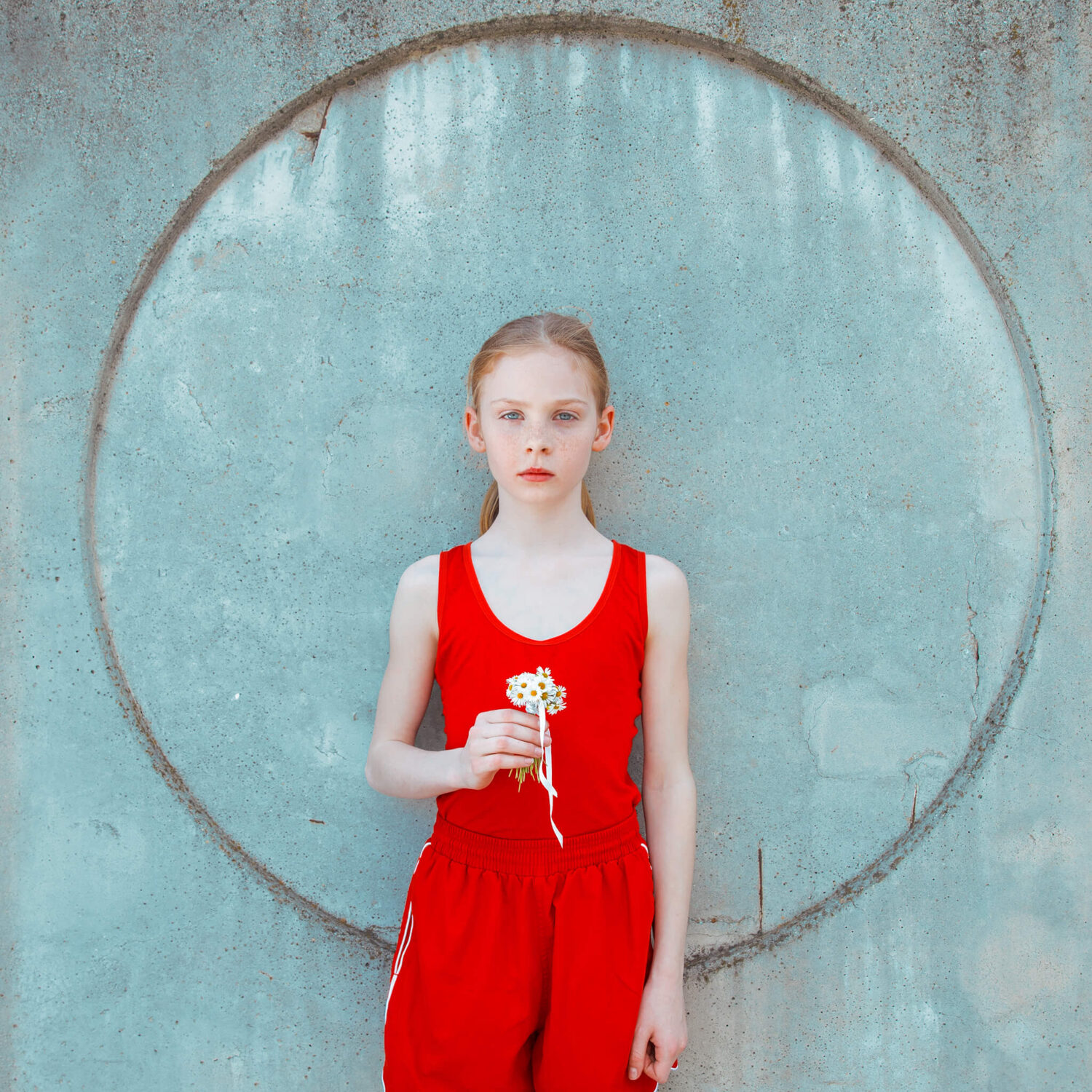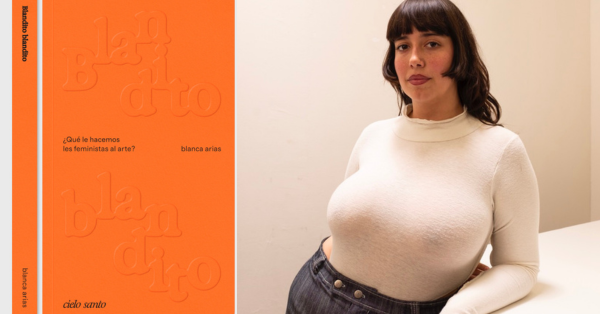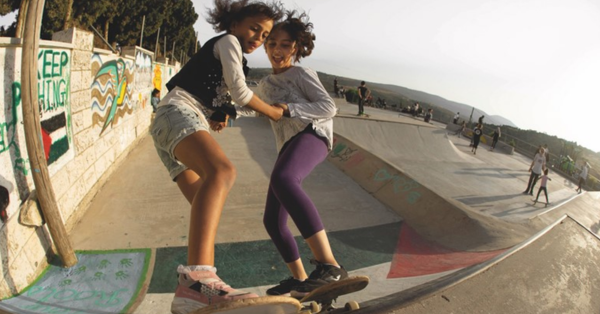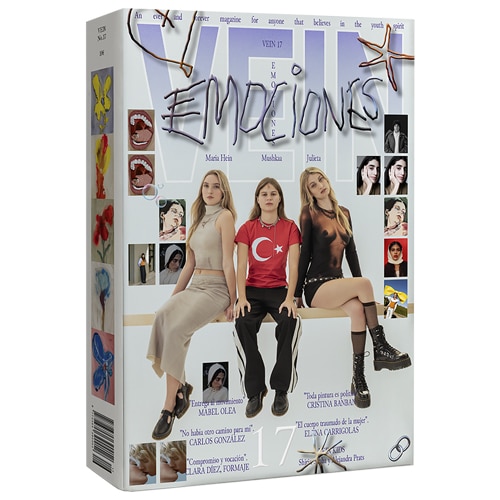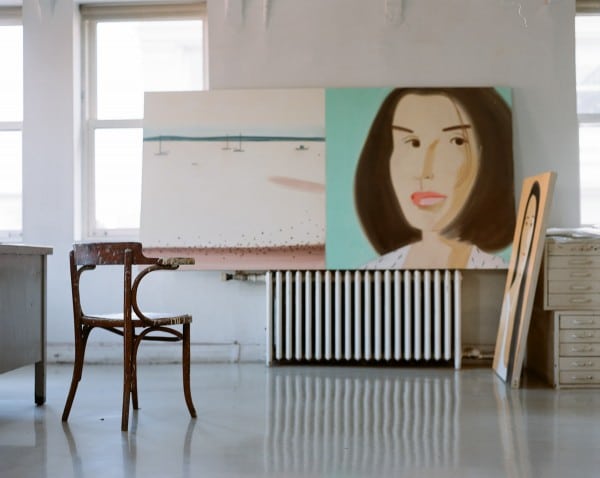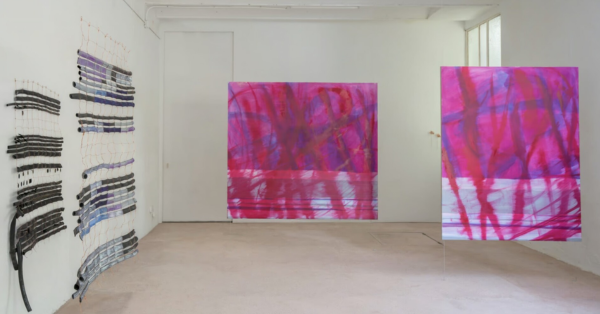We discover the connections behind Mária Švarbová’s images, on the occasion of Art Madrid’25, the contemporary art fair held during Madrid Art Week, where we will be able to see pieces of her photographic work on display.
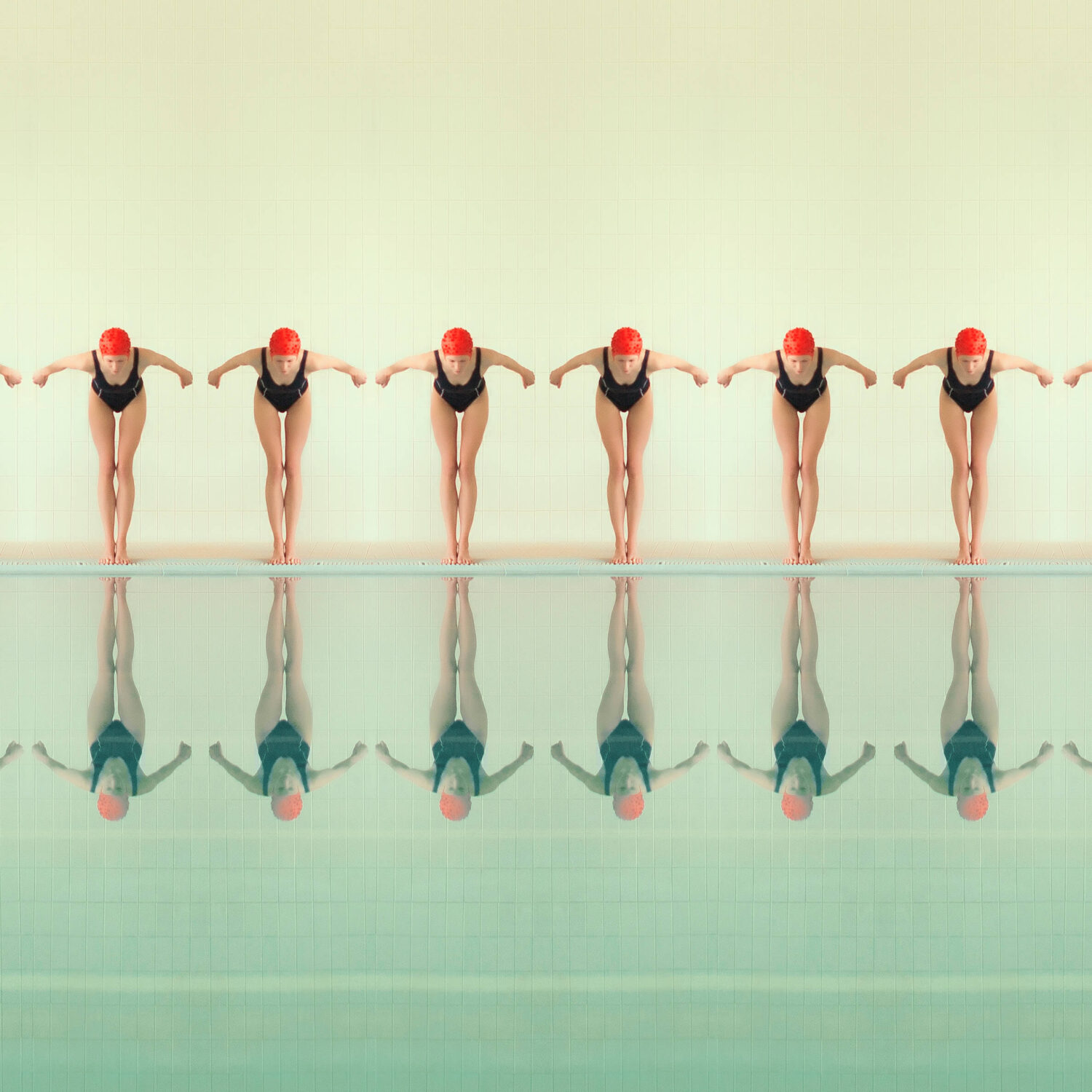
As part of the programming for Art Madrid’25, which takes place within the context of Madrid Art Week, we spoke with Mária Švarbová, a Slovak photographer whose work explores the relationship between the body, architecture, and atmosphere, blending nostalgia with contemporaneity. Švarbová’s fascination with public spaces from the socialist era, particularly public swimming pools, played a pivotal role in shaping her distinctive visual style. Her work, characterised by meticulous composition and a distinctive chromatic palette, draws on her cultural heritage and the environments of her childhood, reinterpreting them with a fresh, contemporary eye. Švarbová creates images that, through symmetry, water, and silence, narrate tensions between the body, space, and memory. Her series of swimming pool images, in particular, has gained widespread recognition, becoming her most famous work to date.
In this 20th edition of Madrid Art Week, under the theme of Territorio Ciudad, the photographer presents a selection of works at Art Madrid’25, linked through colour, composition, and atmosphere. The fair becomes a space for exchange where her work transcends the gallery, integrating itself into the urban dynamic. In this interview, Svarbova discusses her creative process, the visual references that define her work, and what it means to her to be part of this space that connects art and the city.
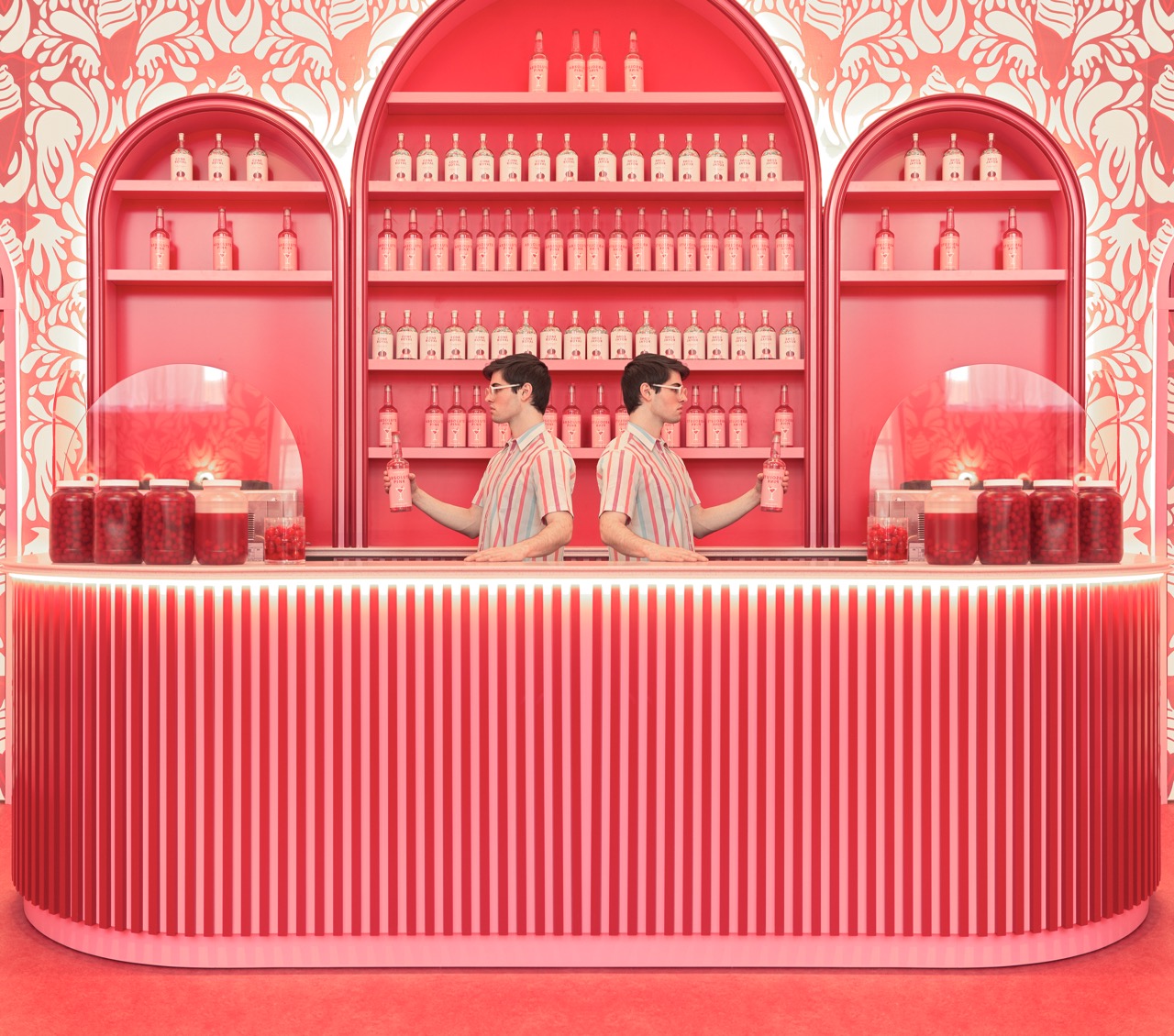
Your work has a strong component of cultural and personal memory. You mentioned that you didn’t live through communism, but you grew up surrounded by its architecture and design. How is this heritage reflected in your photographs?
Yes, it’s true that I didn’t personally experience communism, but I grew up surrounded by the visual remnants of that era—its architecture, design, and overall aesthetic. These elements shaped my childhood environment and naturally found their way into my work. I incorporate these visual references and blend them with contemporary influences, creating a dialogue between the past and the present. My goal is to reinterpret and recontextualize these historical elements, bridging the old with the new in a way that feels both nostalgic and fresh.
Literature can be a source of inspiration and a bridge to memory and identity. Are there any writers or poets who have been fundamental to your artistic journey?
Of course, I read literature, but I’m much more focused on film and visual storytelling. Films provide me with inspiration in terms of composition, camera angles, and overall aesthetics—I pay close attention to costumes, set design, and the way scenes are framed.
I’m particularly inspired by Roy Andersson, especially his meticulously crafted tableaux, muted color palettes, and his ability to create a surreal yet deeply human atmosphere. Some people assume I take inspiration from Wes Anderson, but that’s not the case at all. I’ve never been influenced by his work.
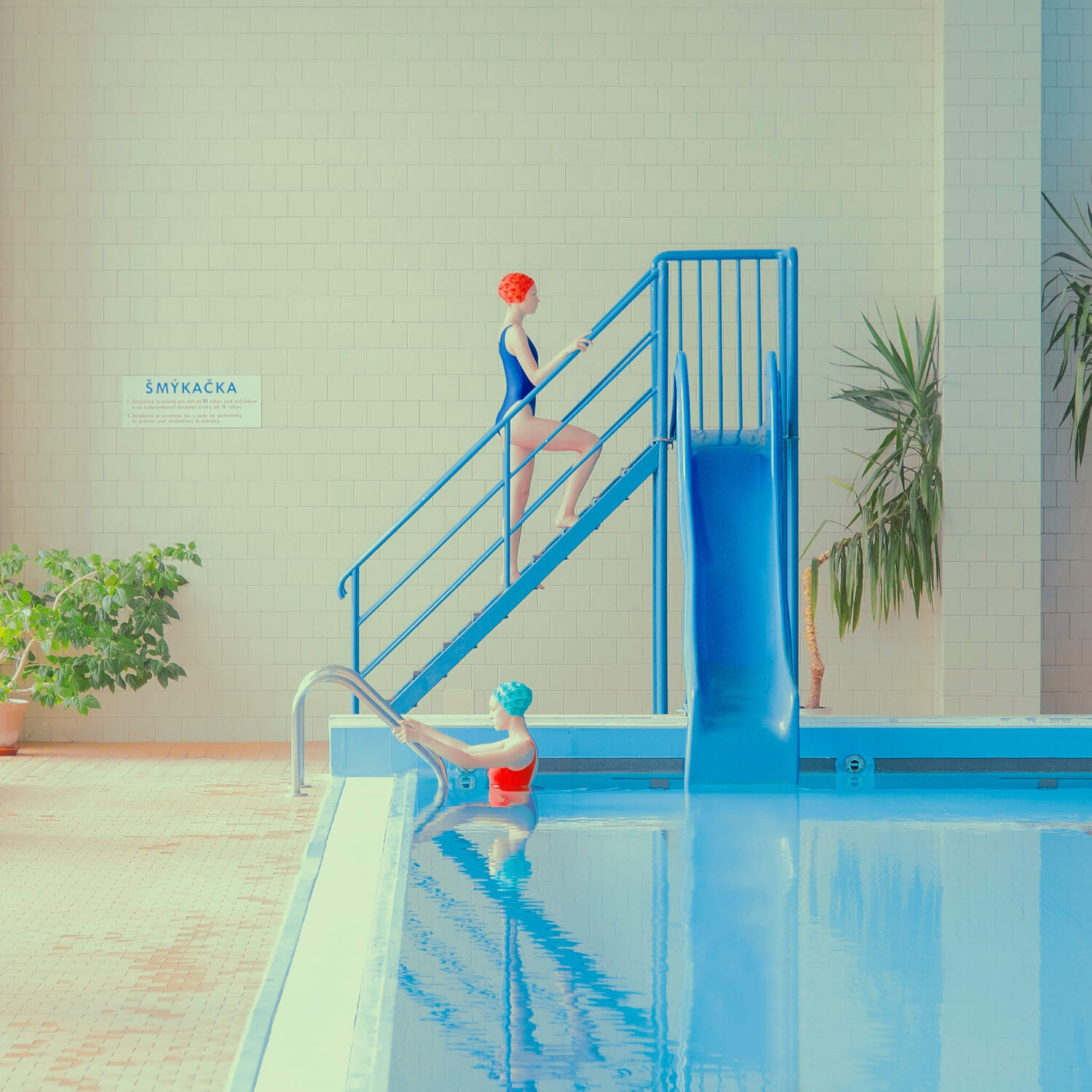
Water is a recurring element in your work, what symbolism does it have for you?
Water, to me, is like a mirror—it reflects, distorts, and creates an alternate reality. It’s both a surface and a depth, a boundary and a passage. When I’m at the swimming pool, I feel as if I’m stepping into another world, one that exists parallel to our own but follows different rules. The way light bends underwater, how movements become weightless, and how sound is muffled—it all contributes to a sense of disconnection from everyday life.
Silence is an element that goes very unnoticed, but seems to be present in the atmosphere of your images. Do you think it plays an important role in the construction of your visual narrative? What does it tell us?
Yes, silence is an essential part of my visual narrative. It’s not just the absence of sound but a presence of its own—an atmosphere that lingers in the frame. Silence in my images creates a sense of suspension, a moment between what was and what’s about to happen. It invites the viewer to pause, to observe, and to fill in the gaps with their own emotions and interpretations. For me, silence holds tension, intimacy, and sometimes even unease.
The colors in your photography inspired Josep Font’s Spring/Summer 2018 Delpozo collection. How does it feel to see your work influence fashion? Do you see a connection between your visual language and fashion design?
It’s an incredible feeling to see my work influence fashion, especially in Josep Font’s Delpozo collection. I’ve always seen a connection between photography and fashion—both play with color, composition, and atmosphere. Seeing my visual language translated into fabric and movement was a powerful reminder of how imagery can extend beyond photography into other forms of art.
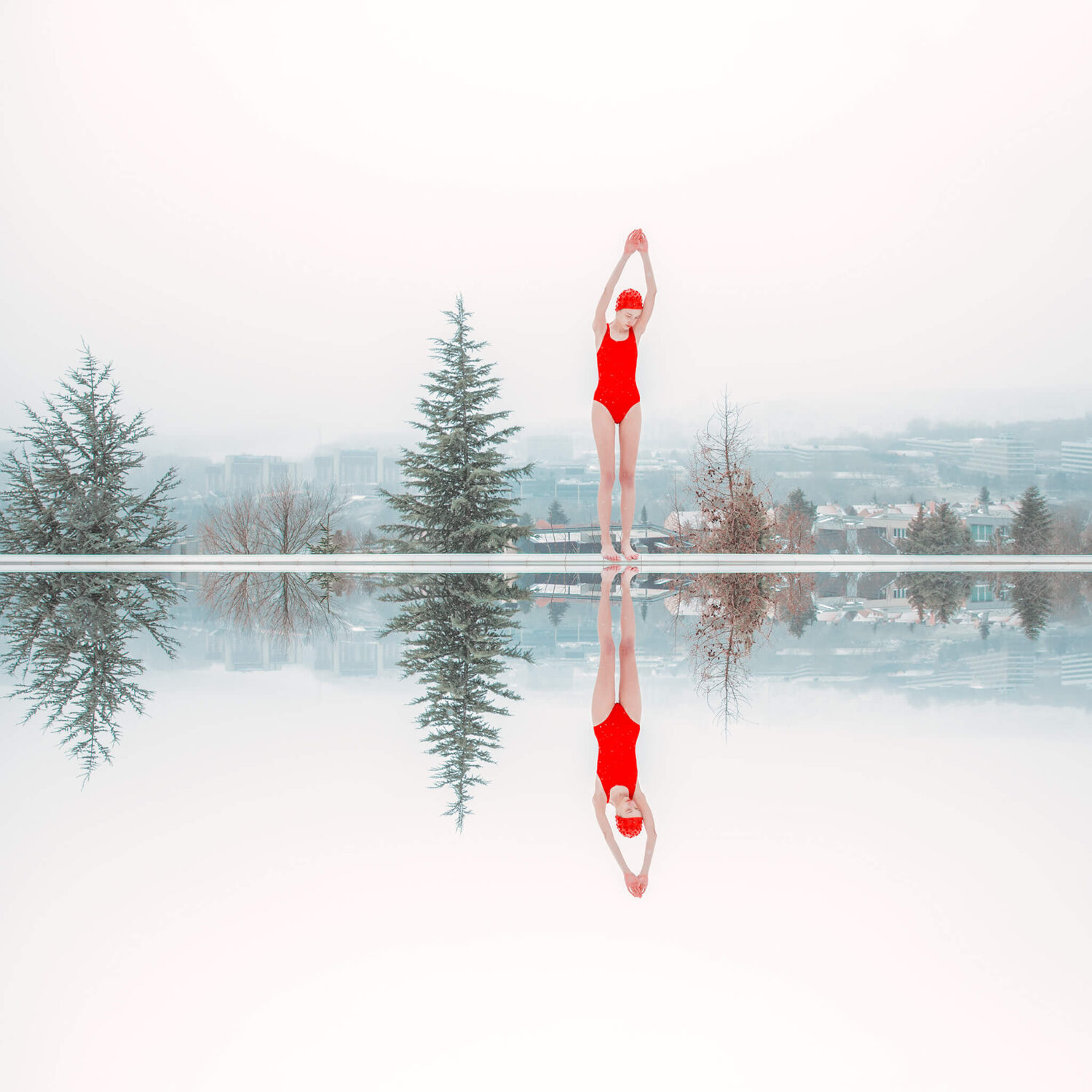
In other series, you work with repetition and multiplication of elements to almost infinity, why? What led you to adopt a more restrained approach in Swimming Pool?
Repetition fascinates me because it creates rhythm, structure, and a sense of the infinite—it removes individuality and transforms subjects into part of a larger, almost hypnotic pattern. In some of my series, this approach helps convey themes of uniformity, isolation, or even a kind of utopian order.
With Swimming Pool, I wanted something more restrained, more focused. The emptiness, the stillness, and the carefully placed figures create a different kind of tension. Instead of overwhelming the viewer with repetition, I let the space breathe, allowing the atmosphere to speak for itself.
You are part of this edition of Art Week Madrid, what value do you find in this space for artistic encounters?
Art Week Madrid is a great space for artistic exchange. It’s inspiring to see my work in a new context, connect with other artists, and engage with fresh perspectives. It’s not just about exhibiting—it’s about dialogue and new creative connections.
What pieces will you be presenting?
I’m presenting a mix of my new and past work. Even though they come from different periods, they connect through color, composition, and atmosphere. My visual language remains consistent, creating a dialogue between past and present, where each piece complements the other.
This year’s concept is Territorio Ciudad, inviting you to reflect on the integration of art in urban space. How do you think your work dialogues with the city and its inhabitants?
My work often strips spaces of time and context, creating a sense of stillness that contrasts with the constant movement of a city. Even in urban settings, I seek a certain detachment—an atmosphere where people exist in harmony with their surroundings, yet remain distant. My images invite viewers to pause, to see familiar spaces in a new way, and to reflect on the balance between individuality and uniformity within the urban landscape.
Your photography explores the relationship between architecture, space and the body. How do you think the context of Art Week Madrid influences the way the public perceives your work?
Art Week Madrid places my work in a new architectural and cultural context, which naturally influences how it’s perceived. The dialogue between my images and the city’s atmosphere adds another layer to the experience. My photography often isolates space and the human figure, but here, surrounded by the energy of the event, viewers may see new contrasts— between stillness and movement, past and present, structure and emotion.
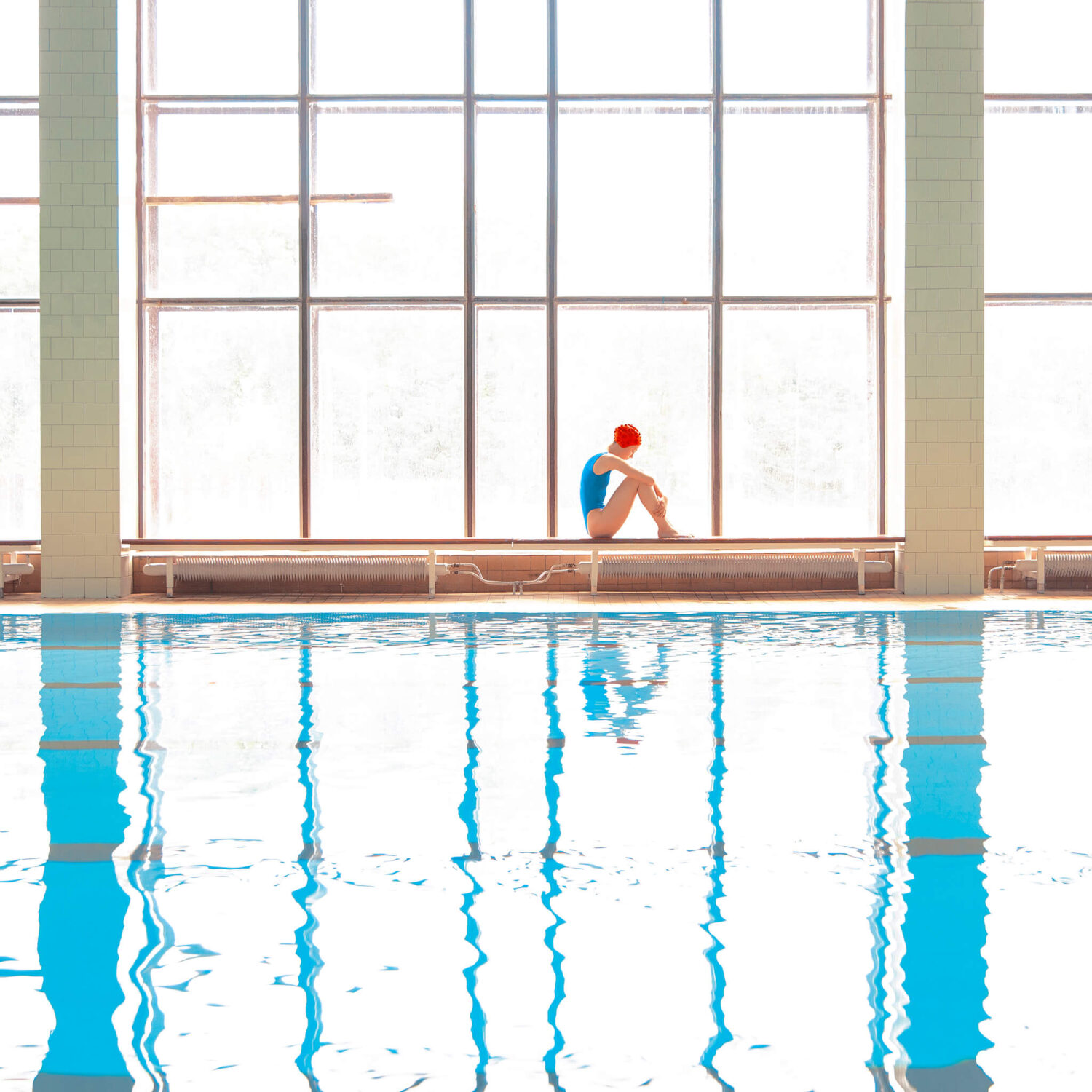
During the fair, interventions will also take place in public spaces such as the metro and the streets, transforming the city into a constantly evolving canvas. Would you like to take your work to an open space or intervene in public places?
Yes, I would love to see my work in an open space. Placing my images in public areas, like metro stations or city streets, would create an interesting contrast between my controlled, quiet compositions and the movement of everyday life. It would offer a new perspective, allowing people to experience my work in an unexpected way—outside of galleries, in direct interaction with the urban environment.
If Maria Svarbova from ten years ago saw her work at Art Week Madrid today, how would she feel? What would you say to her?
I think she would be proud and maybe a little surprised at how far the journey has taken her. Ten years ago, I was still defining my style, experimenting, and searching for my voice. Seeing my work at Art Week Madrid today would be a moment of recognition—proof that staying true to my vision was the right path. I’d tell her to keep going, to stay persistent, and to never give up. I’ve always trusted myself, but this journey has taught me that consistency and dedication are just as important as creativity.
Looking to the future, how do you imagine the evolution of your practice in the coming years?
I see my work evolving while staying true to its essence. I want to keep refining my visual language, exploring new spaces, and experimenting with different mediums—maybe even moving beyond photography. Collaboration also excites me, whether in fashion, film, or other forms of art. Most importantly, I want to keep challenging myself, staying open to new inspirations while maintaining the signature atmosphere that defines my work.
